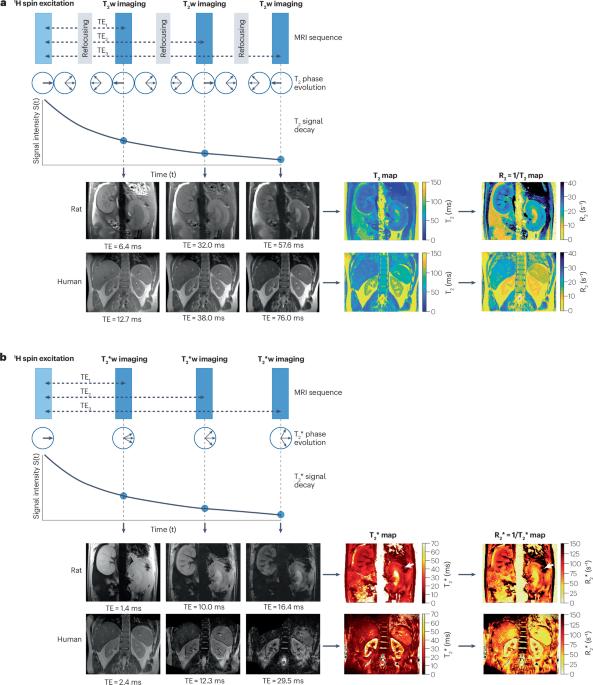肾脏氧合的磁共振成像
IF 39.8
1区 医学
Q1 UROLOGY & NEPHROLOGY
引用次数: 0
摘要
肾性缺氧在许多肾脏疾病的病理生理中起着关键作用。MRI提供了氧合的替代标记,提供了检测肾缺氧的关键机会。然而,评估氧合MRI对肾脏疾病诊断性能的研究提供了不一致的结果,因为MRI指标不能完全捕捉肾脏氧合的复杂性。大多数氧合MRI研究本质上是描述性的,未能详细说明成像结果的病理生理学重要性。这些局限性限制了氧合MRI的临床应用,该技术在促进肾脏疾病早期诊断、风险预测和治疗监测方面的全部潜力尚未实现。肾组织氧合与MRI指标(受肾大小、肾小管体积分数和肾血容量分数的影响)之间的关系,以及使用新的MR方法测量这些因素,对于肾脏MR氧合结果的正确生理解释至关重要。为了使临床采用磁共振血氧仪,下一步应涉及多学科合作,以解决采集和数据分析协议的标准化问题,并建立MRI指标的参考值。本文章由计算机程序翻译,如有差异,请以英文原文为准。


Magnetic resonance imaging of renal oxygenation
Renal hypoxia has a key role in the pathophysiology of many kidney diseases. MRI provides surrogate markers of oxygenation, offering a critical opportunity to detect renal hypoxia. However, studies that have assessed the diagnostic performance of oxygenation MRI for kidney disorders have provided inconsistent results because MRI metrics do not fully capture the complexity of renal oxygenation. Most oxygenation MRI studies are descriptive in nature and fail to detail the pathophysiological importance of the imaging findings. These limitations have restricted the clinical application of oxygenation MRI and the full potential of this technology to facilitate early diagnosis, risk prediction and treatment monitoring of kidney disease has not yet been realized. Understanding of the relationship between renal tissue oxygenation and MRI metrics, which is affected by kidney size, tubular volume fraction and renal blood volume fraction, and measurement of these factors using novel MR methods is imperative for correct physiological interpretation of renal MR oximetry findings. Next steps to enable the clinical adoption of MR oximetry should involve multidisciplinary collaboration to address standardization of acquisition and data analysis protocols and establish reference values of MRI metrics. MRI is a powerful technology for assessment of renal oxygenation. This Review highlights important considerations for the physiological interpretation of renal oxygenation changes measured by MR oximetry and discusses use of this technology in research as well as potential clinical applications.
求助全文
通过发布文献求助,成功后即可免费获取论文全文。
去求助
来源期刊

Nature Reviews Nephrology
医学-泌尿学与肾脏学
CiteScore
39.00
自引率
1.20%
发文量
127
审稿时长
6-12 weeks
期刊介绍:
Nature Reviews Nephrology aims to be the premier source of reviews and commentaries for the scientific communities it serves.
It strives to publish authoritative, accessible articles.
Articles are enhanced with clearly understandable figures, tables, and other display items.
Nature Reviews Nephrology publishes Research Highlights, News & Views, Comments, Reviews, Perspectives, and Consensus Statements.
The content is relevant to nephrologists and basic science researchers.
The broad scope of the journal ensures that the work reaches the widest possible audience.
 求助内容:
求助内容: 应助结果提醒方式:
应助结果提醒方式:


